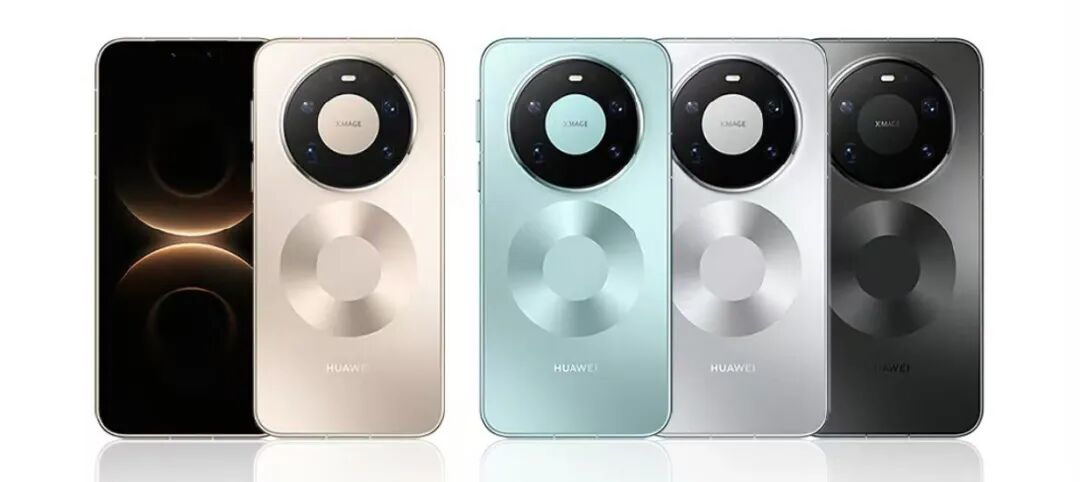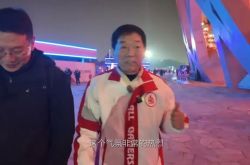Huawei Achieves a 'High-End' Leap Forward
![]() 11/27 2025
11/27 2025
![]() 420
420
On November 25, Huawei officially unveiled two flagship products—the Mate 80 series and the Mate X7 foldable smartphone—at its annual flagship phone launch event, drawing significant attention from the tech industry. Through the vertical integration of software, hardware, and chips, the new models have achieved remarkable leapfrog improvements in intelligent interaction and performance, offering users a smarter and more personalized experience. With this dual-flagship strategy, Huawei aims to further solidify its leading position in the ultra-high-end market segment.
Industry experts believe that this dual-flagship approach precisely caters to the diverse needs of the high-end market while leveraging localized innovations to address user pain points. As the Harmony ecosystem continues to evolve and hardware innovations progress, Huawei is well-positioned to make even greater strides in the global high-end terminal market.
Hardcore Upgrades for 'Dual Flagships'
The Mate 80 series consists of four models: Mate 80, Mate 80 Pro, Mate 80 Pro Max, and Mate 80 RS Porsche Design.
From a hardware standpoint, the Mate 80 series introduces the second-generation Red Maple imaging system and supports macro photography with telephoto lenses. This hardware capability is now accessible to platforms like Xiaohongshu and Bilibili, enhancing live-streaming experiences. Additionally, the Mate 80 series features 700MHz emergency communication capabilities, enabling communication even without network coverage. The Mate 80 Pro Max boasts an ultra-transparent, exquisite Linglong screen with a dual-layer OLED architecture.

The Mate X7 also shines in terms of performance and imaging capabilities. Equipped with a massive 3550 mm² VC graphene cross-axis cooling system, it ensures sustained high performance. Its 5600mAh battery provides up to 10 days of endurance in extreme outdoor exploration mode. With 28 distributed antennas and intelligent antenna scheduling, it achieves 5A speeds, staying ahead of the competition.
In photography, the Huawei Mate X7 features the second-generation Red Maple imaging system, with a deeply customized combination of primary and telephoto lenses, improving color accuracy by 43%. Leveraging its foldable form factor, users can unlock creative shooting modes such as primary camera selfies, suspended photography, and AI-assisted composition on the large screen, offering a truly novel shooting experience. The Mate X7 also supports 17.5 EV ultra-high dynamic range video, capturing highlights in both bright and low-light conditions.
From a design perspective, the Mate X7 adopts a "Portal to Time and Space" integrated camera module and incorporates non-heritage Yunjin (cloud brocade) craftsmanship into the phone's background panel using nano-fiber materials. It is available in two colors: Yunjin White and Yunjin Blue.

Durability is a top priority for foldable smartphones. According to Huawei, the Mate X7 features an ultra-reliable foldable Unicorn Architecture, including second-generation Unicorn Tempered Kunlun Glass, Unicorn Waterdrop Hinge, ultra-tough laminated inner screen, and airfoil aluminum midframe. While ensuring reliability, the Mate X7 uses lightweight yet highly durable materials, keeping the device weight at approximately 235 grams, with a folded thickness of about 9.5mm and an unfolded thickness of 4.5mm. It utilizes UTG glass and offers full waterproof performance.
Currently, the Mate 80 series starts at 4,699 yuan, while the new foldable flagship Mate X7 series starts at 12,999 yuan.
'Software-Hardware Integration' Advantage
Notably, the two new products launched by Huawei boast a differentiated "software-hardware integration" advantage through the synergy of "HarmonyOS + Kirin chips," delivering exceptional performance in intelligent interaction.
The Mate 80 series supports innovative interaction methods with HarmonyOS 6, allowing users to share content across devices using the "Air Drop" feature with a simple "pinch and release" gesture. This functionality is now available on mainstream apps like Xiaohongshu and Douyin.
The Mate 80 series also includes the "Xiaoyi Assistant" feature, enabling users to execute tasks like reordering products based on historical orders or making restaurant reservations through voice commands, acting as a "smart butler."
The Mate X7 deeply integrates AI capabilities with large-screen interactions, debuting commercial A2A (Agent to Agent) intelligent collaboration. This allows Xiaoyi and its friends to work together seamlessly.

In the Mate X7's foldable ecosystem, collaboration between Xiaoyi and third-party intelligent agents goes beyond a single dialog box, leveraging the large-screen advantage to create a new "left-screen decision-making, right-screen execution" interaction model. Additionally, Xiaoyi collaborates with intelligent agents across finance, entertainment, lifestyle, and travel, deeply penetrating various user scenarios to provide personalized and intelligent services, significantly enhancing convenience.
On the other hand, the application of new chips has maximized the performance of the two new models. The Huawei Mate 80 series is powered by the new Kirin 9030 series chip. In terms of memory, the Mate 80 RS Porsche Design will debut with a massive 20GB of RAM, the top configuration in the current smartphone market.
In terms of overall performance, the Mate 80 and Mate 80 Pro offer a 35% improvement over their predecessors, the Mate 70 and Mate 70 Pro. The Mate 80 Pro Max further pushes this to a 42% performance boost.

The Huawei Mate X7 also delivers strong performance, earning the title of "Harmony's Most Powerful Foldable Flagship." Leveraging its foldable architecture, HarmonyOS 6, and ecosystem synergy, the device achieves a 42% performance improvement over its predecessor.
Industry experts view the deep collaboration between the new operating system and chips as a sign that Huawei has built a formidable technical barrier in the two core areas of operating systems and chips. This also reflects Huawei's strategic layout in constructing an autonomous innovation ecosystem, offering users a smoother, smarter, and more convenient experience.
Solidifying High-End Market Position
Against the backdrop of intensifying competition in the smartphone market, Huawei's simultaneous launch of straight-screen and foldable dual flagships reflects a multi-dimensional strategic consideration based on market trends, technological layout, and ecosystem construction.
From a market perspective, this strategy caters to diverse needs in the high-end market. According to Counterpoint Research, global high-end smartphone sales grew by 8% year-on-year in the first half of 2025, highlighting the strategic importance of the high-end segment.

The dual-flagship approach is a key move for Huawei to consolidate its high-end market share. Counterpoint Research data shows that in the global high-end smartphone market for the first half of 2025, Apple remained in the top spot with a 3% year-on-year growth, capturing 62% of the high-end market. Huawei saw a 24% year-on-year increase.
The two flagship products launched this time form a differentiated advantage through over ten industry-first technologies, narrowing the gap with international brands. Huawei's hardware innovations and localized services better align with Chinese market demands. Innovations like the Mate 80's network-free emergency communication and the Mate X7's Yunjin craftsmanship represent Huawei's differentiated competitiveness.
From the perspective of the high-end foldable smartphone market, Jiang Han, a senior researcher at Pangu Think Tank, pointed out that Huawei has established significant first-mover barriers in the foldable segment. Since launching its first foldable smartphone, Huawei has continuously iterated hinge technology, screen materials, and overall design, creating a positive cycle of "technology-brand-user loyalty" in the ultra-high-end (10,000-yuan+) segment. If the Mate X7 achieves breakthroughs in foldable form and intelligent experience, it will further widen the experience gap with competitors and solidify its position as the top choice among domestic high-end users.

The continuous expansion of the Harmony ecosystem serves as crucial support for the dual-flagship strategy. Currently, Huawei's Harmony ecosystem is experiencing rapid growth and is expected to enter a large-scale development phase in 2025.
Yu Chengdong, Executive Director, Chairman of the Product Investment Committee, and Chairman of Terminal BG at Huawei, stated at the launch event: "The number of HarmonyOS 5 and HarmonyOS 6 terminal devices has surpassed 27 million, with a steadily growing user base. The Harmony ecosystem now includes over 300,000 apps and atomic services."
Industry experts believe that as the Harmony ecosystem continues to mature and hardware innovations advance, Huawei is well-positioned to achieve even greater breakthroughs in the global high-end terminal market.







